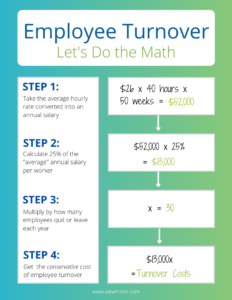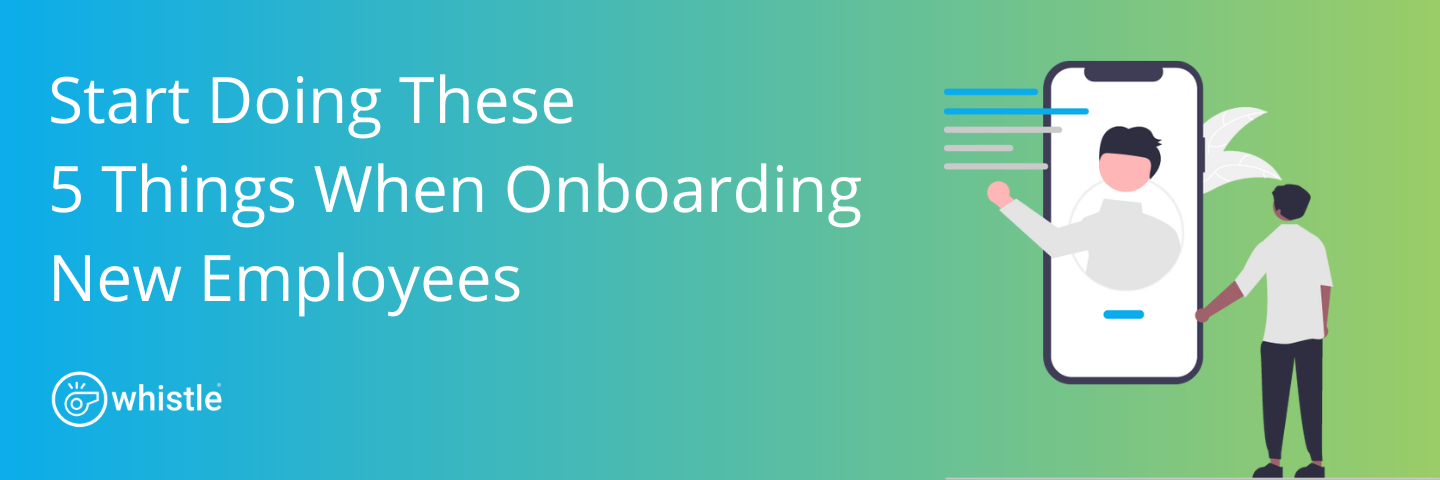Start Doing These 5 Things When Onboarding New Employees
Let’s not sugarcoat it… the majority of employee onboarding really sucks if only 12% of employees say their employer does a “great job,” as this statistic from Gallup suggests.
It makes sense if you think about it. Most companies pay more attention to their customers than to their own employees, often bucketing “human resources” as a lump sum cost of operating the business instead of quantifying the opportunity cost of poor talent management.
But times have changed. The pandemic happened. And American workers are becoming more selective in what they are willing to put up with — and what they expect in return. With momentum swinging in favor of employees instead of employers, roughly 90% of companies have an opportunity to improve the employee onboarding experience.
Here are five things companies need to START doing immediately to make an impact:
Get employees excited to come to work
Make the content and flow of information relevant
Adopt user-friendly platforms
Structure workplace interaction and gamify the experience
Prioritize your people
We could try to convince you further that poor onboarding costs companies more each year than it would to address the issues, but we’d rather focus on how to start making progress.
Let’s just dive in…
#1
Stop Neglecting the Pre-boarding Process
& Start Getting Employees Excited to Come to Work
The employee experience starts before someone even applies to your company, which means there is ample opportunity to make a great first impression.
Once a job offer is made, what usually follows is a series of templated communications leading up to the employee’s “official” first day. This pre-boarding phase is frequently overlooked when it can be used to minimize confusion about first-day expectations.
Put some thought into how you want to welcome new team members to make them feel excited and more confident that they made the right decision to join your company.
Reports show how companies that neglect the pre-boarding experience are more likely to lose new recruits during the first six months, so it’s kind of shocking that 64% of new hires receive no pre-boarding experience.
#2
Stop Failing to Personalize the Experience
& Start Making the Content and Flow of Information Relevant
One-size-fits-all programs rarely work well for everyone, so companies must stop presenting the same slides to all new hires.
At minimum, find ways to add unique components based on the new employee’s role, title or level in the organization. Enlist other departments to help customize information based on specific employee segments or compile “helpful tips” from employees in similar positions.
In order to get optimal productivity from employees, companies must also consider the Hierarchy of Employee Needs. It’s important to address primary needs such as “Safety” and “Expectations and Basic Capabilities” in order to empower individuals — all of which should be clearly communicated and part of the personalized onboarding experience.
In today’s workplace, companies that prioritize individual experiences for workers will set themselves apart and boost vital metrics like employee loyalty, retention and satisfaction.
#3
Stop Depending on Lackluster Technology
& Start Adopting User-Friendly Platforms
Businesses think they’re investing in valuable onboarding software when what they’re actually getting is a klugey platform designed to keep track of paperwork and upload PowerPoint presentations.
It’s important to prioritize a genuine educational experience that supports micro-learning and simple gamification so the onboarding experience feels more seamless, intentional and — dare we even say it — fun!
Learn more about how Whistle is transforming onboarding for our clients
HR professionals can remedy this by investing in credible onboarding solutions that build experiences around human beings, not just the administrators.
#4
Stop Overloading New Hires with Mundane Tasks
& Start Structuring Workplace Interaction and Gamification
Did you know the average new hire is expected to complete 54 activities during their onboarding process? (Source: Sapling HR) If box-checking is your thing, maybe that sounds fun. But for most individuals, it just makes starting a new job more stressful.
During an average onboarding, employees are also presented with tons of information — about the company history, current structure, business goals and who to meet, who to know and what tasks need to be done yesterday — all deemed “super important.”
Why do companies continue to do this to people? Especially when most people describe the first few days and weeks in a new role like drinking from a firehose. Human brains just aren’t designed to process that much information all at once, and it certainly doesn’t help them do their job better if they just feel completely inundated with new information.
Even if employees make an effort to retain some information from an onboarding, they usually forget most of it as they begin their day-to-day duties.
Instead, create a well-organized reference library for new hires and then focus on the information they need to gain confidence in the role they were hired to do. This includes pairing them with a colleague who can show them the ropes or serve as a go-to resource. Also, find ways to incorporate gamification into the process – think quizzes, badges, milestone awards – which are even more enticing when paired with monetary incentives… to encourage learning and not just box-checking.
Not sure where to start? Our program specialists will gladly speak with you!
Businesses can set new hires up for success by intentionally providing necessary information at a realistic pace.
#5
Stop Making Excuses to Not Innovate
& Start Prioritizing Your People
 Very few businesses can run efficiently without people. And yet the majority of companies still refer to their people department as “Human Resources,” implying they can be used instead of, say, talent to be properly treated, managed and empowered.
Very few businesses can run efficiently without people. And yet the majority of companies still refer to their people department as “Human Resources,” implying they can be used instead of, say, talent to be properly treated, managed and empowered.
A crappy onboarding experience costs most companies more in one month than investing a percentage of that into a new experience. Don’t believe us? The cost to replace a new employee is estimated anywhere from 25% to 250% of the individual’s salary (depending on the type of role, obviously). Let’s do the math.
The average pay for rank-and-file warehouse and transportation workers is roughly $26 an hour, or $52,000 annually, assuming a 40-hour workweek and two weeks vacation. On the conservative side then, 25% of $52,000 means it costs companies roughly $13,000 for every employee they lose and need to replace.
Those costs add up and — since they usually don’t get reported as a hard cost line item — overlooked.
Conclusion
Onboarding employees will continue to be an integral part of business. While these things may feel big, don’t let that stop you from seeing the bigger picture.
Forward-thinking companies that invest in better onboarding experiences now will benefit later from a boost in retention, more confident and competent teams and a competitive employer brand – translating to millions of dollars of value.
Forget the Bells. You Just Need Whistle.
Overwhelmed? Let us help you build a better onboarding experience, improve leadership training, or find innovative ways to appreciate your people — start by speaking to a consultant for free.









